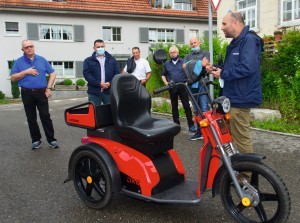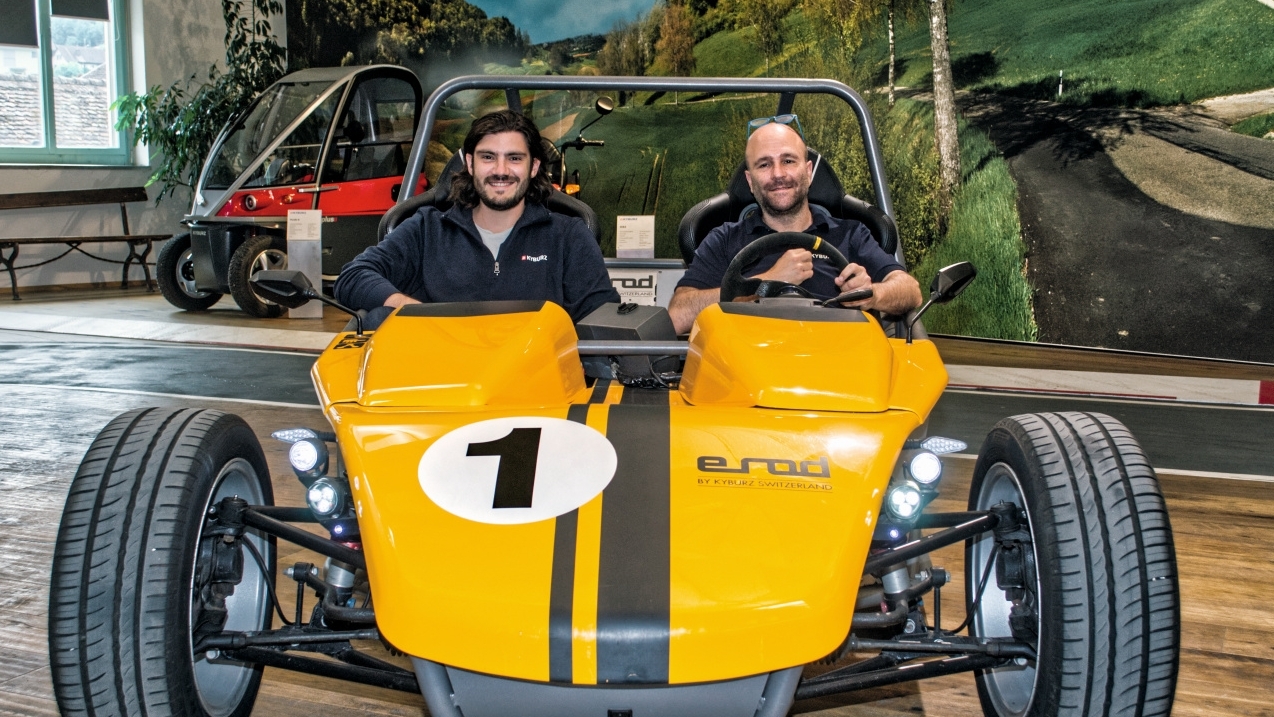On June 9, 2021, 20 members of the Swiss Society for Surface Technology (SGO) visited Kyburz AG in Freienstein-Teufen.
 A touch of Easy Rider: Kyburz AG's entry-level model appeals to a broad target groupThiswas fun! Instead of suffering through dry theory and endless company tours, 20 SGO members from the German-speaking part of Switzerland were allowed to ride mopeds. Some of them rode a stylish single-seater, which is also the company's entry-level model. Others wanted to feel like a letter carrier and chose the squeaky yellow delivery vehicle from Swiss Post.
A touch of Easy Rider: Kyburz AG's entry-level model appeals to a broad target groupThiswas fun! Instead of suffering through dry theory and endless company tours, 20 SGO members from the German-speaking part of Switzerland were allowed to ride mopeds. Some of them rode a stylish single-seater, which is also the company's entry-level model. Others wanted to feel like a letter carrier and chose the squeaky yellow delivery vehicle from Swiss Post.
The beginnings of Kyburz AG date back to 1985, when Martin Kyburz started to develop an electric vehicle suitable for everyday use. He succeeded with the "Cheetah", with which he even won races. Today, Kyburz AG is still active in this field - among other things. The company manufactures electrically powered passenger vehicles, delivery vehicles, commercial vehicles and even a classic roadster for the fun sector (see picture above).
The Freienstein-Teufen-based company's main customer is the Swiss Post. Or rather, many postal companies around the world. Because the yellow delivery classics are not only used in Switzerland. Germany, Hungary, Norway, the Netherlands and even Australia (to name but a few) have ordered vehicles from northern Switzerland. Commercial vehicles for municipal use are also becoming increasingly popular. A total of around 20,000 Kyburz AG vehicles are on the road worldwide. Since electric vehicles are known to be powered by rechargeable batteries, Kyburz AG already had the know-how in-house and another mainstay of Kyburz AG is therefore storage technology for domestic solar systems. The range includes energy storage units of various sizes and capacities. Finally, the reconditioning of batteries and used vehicles is another mainstay of the company. 2nd and even 3rd-life reconditioning of vehicles is offered at low cost. Speaking of which: a new vehicle starts at just over 12,000 francs, while a well-preserved and reconditioned used vehicle is available from just under 7,000 francs. Even with continuous, daily use, a battery pack lasts 6 to 8 years, whereas 4 to 5 years was once expected. The quiet speedsters are charged using standard household power sockets. After all, an almost empty battery needs around 8 hours to regain its full capacity. Deep discharging should be avoided.
Finally, the group was shown how to dismantle a used battery: Separating the housing from the inner workings, separating the cathode and anode, cleaning and proper storage were the topics here. The informative afternoon in Freienstein-Teufen ended with an aperitif.


